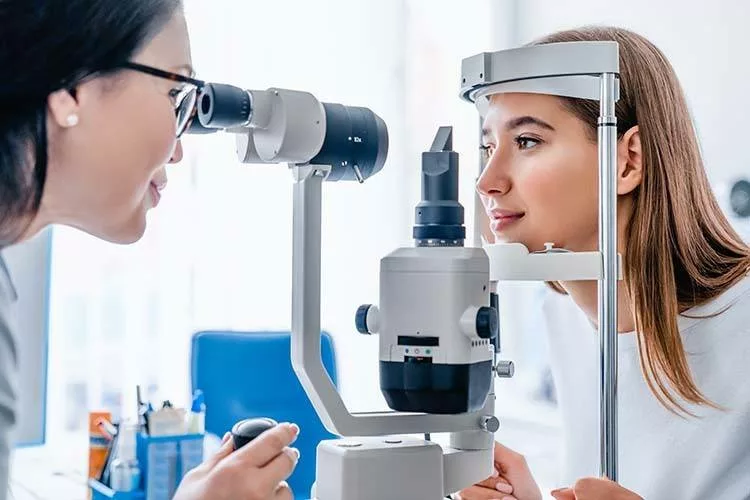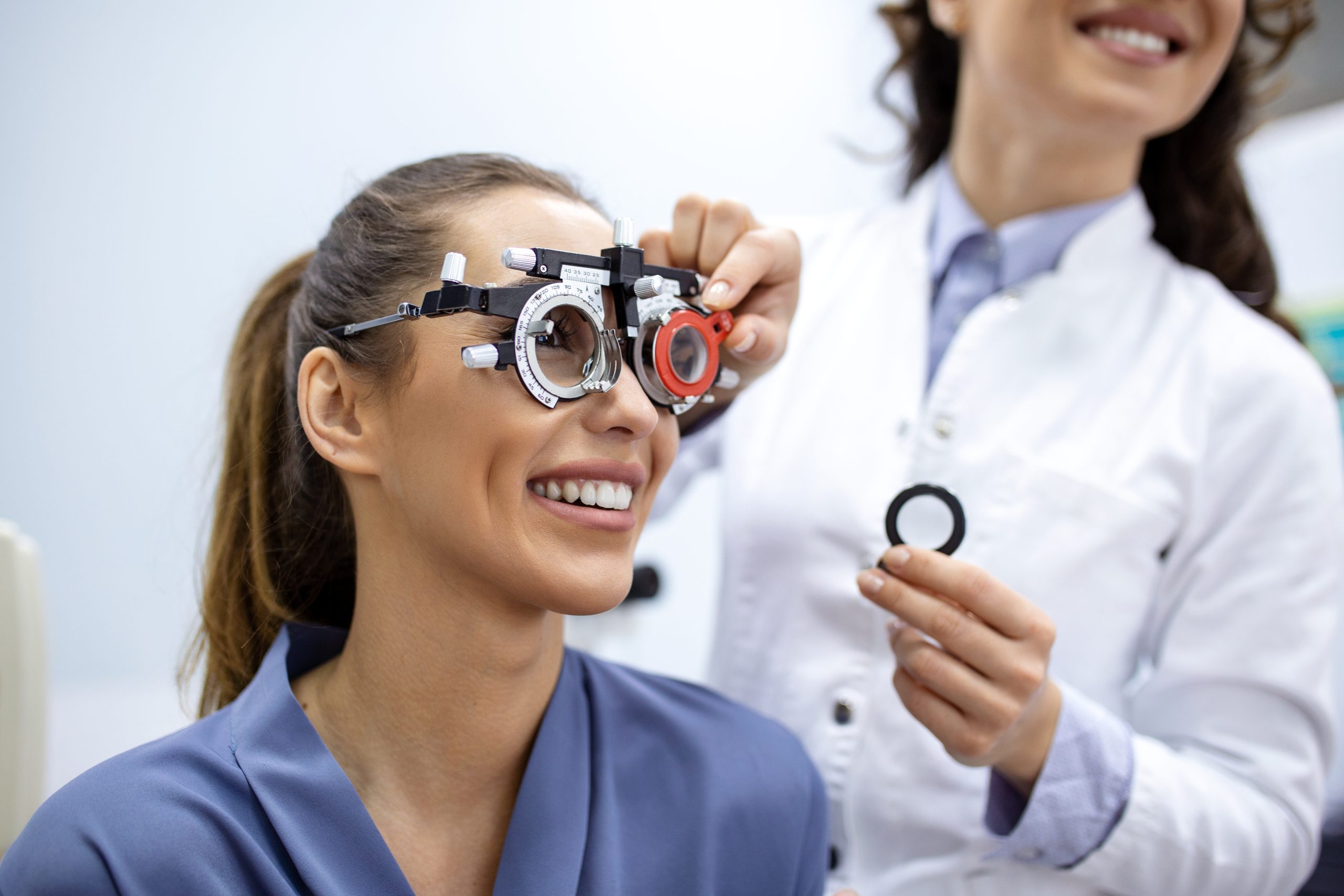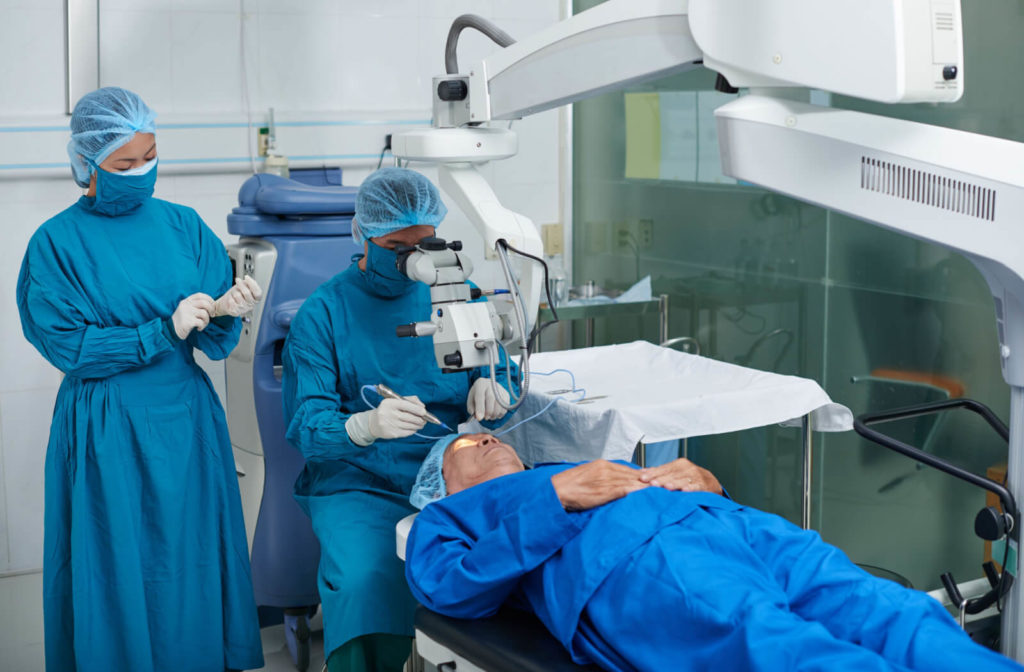Discover Advanced Providers at Opticore Optometry for Eye Health
Discover Advanced Providers at Opticore Optometry for Eye Health
Blog Article
Discovering the current Technological Innovations in Optometry and What They Mean for Eye Doctors
In the ever-evolving field of optometry, current technological developments are reshaping exactly how professionals approach eye treatment. From the accuracy of Optical Comprehensibility Tomography to the nuanced insights supplied by AI-driven analysis devices, these advancements are establishing new criteria in client assessment and therapy. Teleoptometry is positioned to redefine ease of access, making certain that proficiency transcends geographical constraints. As these developments penetrate the practice, eye doctors are encountered with the obstacle of welcoming these devices to boost individual results. The concern stays: exactly how will these technological shifts redefine the roles and responsibilities within the occupation?
Developments in Diagnostic Tools
Advancing the field of optometry, technologies in analysis tools have actually changed the means eye care professionals analyze and identify eye conditions and aesthetic disabilities. The past years has witnessed substantial technological advancements, making it possible for more exact and detailed examinations.
Another secret innovation is the introduction of advanced corneal topography systems, which map the surface area curvature of the cornea with precision. These devices are particularly valuable for suitable get in touch with lenses and detecting corneal disorders. Electronic retinal imaging has actually changed traditional ophthalmoscopy, using detailed, panoramic views of the retina that assist in detailed visual evaluations.
The growth of wavefront aberrometry has actually additionally been crucial, enabling the analysis of refractive errors with unrivaled accuracy (Eye Doctor Optometrist). This modern technology aids in customizing corrective lenses and enhancing surgical outcomes for refractive surgical treatments. Collectively, these diagnostic improvements empower optometrists to deliver superior patient care, making certain very early treatment and customized therapy methods, inevitably boosting aesthetic health and wellness results
AI in Individual Management
Building on the structure of innovative diagnostic devices, the consolidation of man-made intelligence (AI) in patient monitoring stands for a transformative leap for optometry. AI systems are significantly utilized to improve efficiency, accuracy, and personalization in person treatment.
Moreover, AI-driven platforms promote structured client communications and administrative processes. Automated organizing, online appointments, and customized follow-up strategies not just improve client contentment however additionally maximize time management for specialists. These systems can triage patients based upon the necessity of their conditions, making sure that those in crucial need receive punctual interest.
Furthermore, AI boosts decision-making by giving optometrists with evidence-based suggestions and therapy paths. By integrating data from digital health and wellness documents, AI devices provide insights that educate medical decisions, lowering the risk of mistakes and enhancing individual end results. As AI proceeds to evolve, its function in client monitoring will likely broaden, reshaping the landscape of optometric care.
Developments in Retinal Imaging
In the realm of optometry, retinal imaging has actually experienced amazing technical advancements that are improving analysis abilities and individual treatment. Innovations such as Optical Coherence Tomography (OCT) and fundus photography have actually changed just how eye doctors imagine and evaluate the retina. OCT, in specific, provides high-resolution, cross-sectional photos of the retina, permitting the detailed evaluation of its layers. This capability is indispensable for very early detection and administration of problems like glaucoma, diabetic person retinopathy, and age-related macular degeneration.
Enhanced imaging techniques like OCT angiography are further refining diagnostic accuracy. This non-invasive strategy maps blood flow in the retina, using crucial understandings right into vascular health without the requirement for dye injections. In addition, flexible optics modern technology is being integrated right into retinal imaging systems to remedy eye aberrations, supplying unprecedented picture quality. Such improvements assist in the recognition of min retinal changes that might symbolize disease progression.
Moreover, developments in man-made knowledge are enhancing retinal imaging by allowing computerized evaluation of big datasets. These systems assist optometrists in recognizing patterns a sign of pathology, therefore improving analysis precision and performance. Jointly, these advancements are transforming retinal imaging into a foundation of contemporary eye care, enhancing outcomes and increasing restorative opportunities.
Teleoptometry's Expanding Role
Teleoptometry is significantly ending up being a crucial element of eye care, driven by developments in digital communication and diagnostic devices. This is particularly beneficial in underserved and country locations where accessibility to specialized eye treatment is usually limited.
The assimilation of synthetic knowledge (AI) more improves teleoptometry, allowing the analysis look what i found of aesthetic information and aiding in the discovery of eye conditions such as glaucoma and diabetic retinopathy. AI-powered algorithms can quickly analyze complex imaging information, offering eye doctors with important insights that bolster medical decision-making.
In addition, teleoptometry sustains connection of treatment with smooth combination with electronic wellness records (EHRs), enabling optometrists to keep comprehensive person backgrounds. This ensures that clients obtain customized and constant care also when seeking advice from different specialists.
Despite these benefits, challenges continue to be, consisting of making certain data safety and handling client expectations. Nevertheless, teleoptometry stands for a considerable stride towards more obtainable, efficient, and patient-centered eye treatment. As innovation develops, its duty is poised to expand better.

Future Patterns in Eye Treatment
A myriad of cutting-edge trends is readied to improve the future of eye care, driven by technical advancements and the advancing demands of clients. One significant fad is the assimilation of expert system (AI) in diagnostics, which guarantees to improve the precision and effectiveness of eye examinations. AI formulas can assess large amounts of data from retinal pictures, potentially finding conditions like diabetic retinopathy and glaucoma earlier than standard methods.
Furthermore, tailored medication is getting grip in optometry, with genetic screening educating personalized therapy plans. This method intends to maximize person outcomes by tailoring interventions to private genetic accounts. Wearable modern technology, such as why not find out more clever get in touch with lenses, is additionally on the horizon, using real-time tracking of intraocular stress or sugar degrees, hence offering constant insights into systemic and ocular health and wellness.
The fostering of increased fact (AR) and virtual reality (VIRTUAL REALITY) in training and patient education is another arising fad. These innovations use immersive experiences that can enhance understanding and abilities both for eye doctors and individuals. As these trends progress, eye doctors should remain abreast of technological advancements to offer innovative care, making certain enhanced person results and fulfillment in the vibrant landscape of eye treatment.
Final Thought

Jointly, these diagnostic improvements equip optometrists to supply superior individual treatment, making sure early treatment and tailored therapy techniques, eventually boosting aesthetic health end results.

As these modern technologies proceed to develop, optometrists need to adjust and incorporate them right into practice, inevitably enhancing operations efficiency and raising the standard of eye care supplied to patients.
Report this page